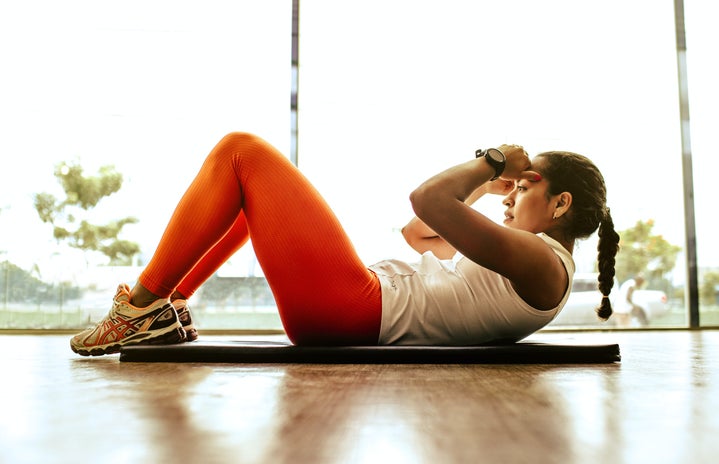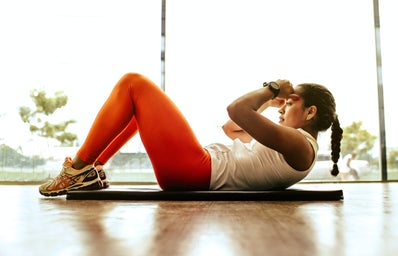Yoga is a way to find mental and physical wellness, but many people have a hard time approaching it. It seems as though we either view the practice of yoga as too “gentle” or not a legitimate form of exercise, or we are intimidated by the graceful and impossibly flexible practice of Instagram yogis or those around us.
Let me preface my current love for yoga by saying this: I still can’t do a full handstand, and it took me a full year to touch my toes, let alone place my palms comfortably on the floor like I do now. I also no longer go to the gym, and yoga is my only form of physical activity. Even the most naturally inflexible of us – I’m looking at you, tight hamstrings! – can customize a yoga practice to their body, and anyone can find ways to fit different types of movement into their exercise routines. The main obstacle is figuring out where to start.
In navigating which type of yoga fits your current practice – even if it is nonexistent and you’re starting from square one – it is important to first understand the different categories. The main types of classes you may encounter are Vinyasa or “Flow” classes, Ashtanga Yoga, Bikram Yoga, and Yin or “Restorative” Yoga. Between these types of classes, there is a range of difficulties, accessibilities, temperatures, and styles. However, it is important to note that there is no being “good” or “bad” at yoga; any practice is a yoga practice, and I encourage everyone to try out different types to see which class is best for where they are in their personal yoga journey. That being said, yoga is notorious for being non-judgmental and un-alienating, and there’s no harm in diving in head first!
A lot of times we hear the word “vinyasa” in a description of a yoga class. In playing into the exercise-culture and hype, gyms or studios may also name a vinyasa class “Power Flow” or “Hot Fluid Flow” or some other name involving a rigorous, dynamic practice. These “flow” classes are essentially all rooted in continuous sequences of poses, in which movement is linked to breath. There may also be concerted exercises for Pranayama, or breath control, in between physical asanas (movement).
Vinyasa classes typically start with centering, or a “sacred space,” in which students will start in a resting pose to begin slowing down the breath and practicing mindfulness. Subsequently, students may be asked to begin linking movement to their breath. For example, “Cat Cow” movements involve inhaling to arch the back into “cow,” and exhaling to round through the spine into “cat.” Once breath has been established, an instructor will ask students to begin cultivating Ujjayi breath, in which both inhales and exhales are done through the nose with a slight constriction of the throat to create audible and powerful breath. The class, depending on the studio or instructor’s style of teaching, will involve multiple “vinyasa flows” with either rest, core circuits, mobility work, or inversions in between.
In many vinyasa classes, the first flow will be a Surya Namaskara A or “Sun A” flow to warm up the body and practice linking gentle movement to breath, such as through side bends, heart openers, and chaturangas. This is typically followed by some form of a Surya Namaskara B, which is a heat-building series of poses typically rooted in Utkatasana or Chair Pose. Again, depending on individual stylistic choices, Sun B’s may be followed by another flow, Sun C. At my studio, Tiny Buddha Yoga, our Sun C flows are the longest of all. They typically consist of difficult transitions between poses and multiple balancing poses such as Virabhadrasana lll or Warrior 3, Ardha Chandrasana or Half Moon Pose, and Parivrtta Hasta or Dancing Shiva. Depending on the studio, instructor, and even the demographic of the customer base, Sun A, B, and C flows may be done once on each leg, multiple times at a slower pace for several breaths per movement, or multiple times at a faster pace of one breath per movement. Many studios will also conclude class with a short “yin” portion, or “cool down” sequence. These gentler, more restorative poses will prepare students to eventually wind down and find peace in a final rest, or Savasana. At Tiny Buddha, we even offer different subtypes of vinyasa classes – all in a heated room of 90+ degrees – for different levels of practice. These include Hot Vinyasa, Blend Vinyasa, and Slow Burn.
Hot Vinyasa consists of all of the above types of sequenced flows, with Sun As, Bs, and Cs all being completed multiple times on each leg and built up to a speed of one breath per movement. Instructors lead students through the flows about 2-3 rounds, and then encourage the class to complete one or two rounds on their own with time and space to follow their individual breath. A Hot Vinyasa class also concludes with a short Log flow that is much slower and either focuses on burning out one particular muscle or part of the body, or consists of extremely slow, difficult transitions.
Instructors typically also do a core circuit that targets certain parts of the core or challenges students to maintain their breath in a cardio-core hybrid circuit. At TBY, Hot Vinyasa is typically considered the most rigorous asana, or physical practice, because it is so fast-paced and very individual. Though most parts of the class are led, many seasoned practitioners know pose names by heart and will instinctively add in their own variations and modifications. For example, instructors may queue the addition of a crow pose or other arm balance in Sun Bs for those more experienced yogis. Further, because typical Hot Vinyasa students are adventurous and energetic in nature, instructors may substitute the Log portion of class for a peak pose, in which class will be centered around preparing the body to move into an ultimately more ambitious pose at the end of class.
Blend Vinyasa is a step down from Hot Vinyasa, with Sun Cs and Logs being combined into one final flow after Sun Bs. This flow is done once on each leg and poses are held for an extended amount of time. Further, instructors usually substitute the core portion of class time to practice an inversion – which is any pose where your head is below your heart – either individually or as a group, or they may do some concentrated mobility work. Similarly, Slow Burn is another step down from Blend Vinyasa, in which Sun B’s and C’s bleed into each other. Instructors will build the flow in pieces and add on poses with every round, eventually getting rid of the anchoring in chair pose between rounds that Sun Bs would usually have. This gives students the chance to get deeper into these grounding poses, as well as more space for alignment adjustments and attention to detail.
Though many consider Hot Vinyasa, Blend, and Slow Burn to be concrete steps down from one another, it really depends on where your strengths are in your practice. While Hot Vinyasa is the fastest pace and has the most flows/components, someone with strong cardiovascular stamina – who can easily keep up with one breath per movement pacing – may find the muscular endurance and slower, more strengthening aspects of Blend Vinyasa to be much more edgy. Further, someone who has the most trouble slowing down and tends to distract their discomfort with movement may find Slow Burn to be extremely difficult and maybe even unsettling. That is the beauty of yoga: the unique pieces of one’s practice fit differently in certain classes than others. Everyone is different.
Another common type of yoga is Ashtanga. It is a traditional, strictly regulated, and disciplined form of yoga that involves the exact same sequence of poses every time. Each pose is held for the same amount of breaths every time, and seasoned practitioners may even sync up their breath with the yogis next to them as they memorize the series over time. There is no music, and the class is fully led from start to finish as the instructor bluntly queues pose names and breath. The distinctive sections of a Half-Primary Series Ashtanga class (Full Primary is about an hour and a half long, and adds in extremely advanced postures that are more “alienating” to the larger population of practitioners since they are so challenging) are 5 rounds of Sun As, 5 rounds of traditional Sun Bs, standing postures, balancing postures, 3-5 rounds of Navasana (boat pose), seated postures, and Savasana (or rest).
Many students may feel lost and quite confused during their first Ashtanga class, as the structure is very rigid and it is easy to fall behind the rest of the class if you aren’t on the correct breaths. However, with a dedicated practice, over time many find that Ashtanga is the purest form of a “moving meditation” – a phrase we often use to describe our yoga practice – and actually can prove to be soothing and at times hypnotic. Ashtanga also can help new students learn pose names and breath queues, as repetition is a great way to engrain certain yoga “rules” in your practice. That being said, it does require a certain amount of body awareness and may not be the best option for a green student.
Bikram Yoga is almost a more “mainstream” version of Ashtanga yoga. It has been very idealized within the recent exercise and dieting trends, and studios specifically for Bikram can be found in almost any city in the US. In 2003, Bikram Choudhury founded this type of yoga based on traditional yoga Hathas. Bikram is practiced in an excruciatingly hot room – typically 100+ degrees with 40% humidity – and involves that Ashtanga-y discipline and repetition that allows students to build a routine-based practice. The class consists of the same 26 postures and two breathing exercises every time.
Bikram instructors also have uniform phrases and dialogue that they incorporate into every class, again emphasizing repetition and discipline. Though I have never actually attended a Bikram class, many rave of its cleansing health benefits and, similar to Ashtanga, the benefits of a routine and repeated alignment. Will Bikram Yoga cleanse you of all your sins and make you a titan on the mat? I can’t say. But as someone who loves to move and personalize my flows, the stagnation and lack of innovation in Bikram doesn’t seem like it’d fit my current practice. Lastly, one of the most common and perhaps the most physically accessible type of yoga is Yin or Restorative Yoga. Many people may recognize the term “yin” from the “yin and yang” concept that emphasizes a balance of opposites. In yoga, yin and yang represent our practice being a healthy combination and balance of physical exertion and hard work – yang – and eventual restoration and peace – yin.
While Hot Vinyasa may be a more yang-y practice, Restorative Yoga or Yin is designed to supplement your physical asana with a therapeutic practice of stretching and meditation. These classes may involve helpful probs like blocks, blankets, or straps, and many instructors will play soothing music to supplement the calming atmosphere. Long holding postures are accentuated by deep breathing and a longer, fully-led deep meditation. Many studios may advertise this type of class for athletes or practitioners looking to supplement an otherwise physically taxing routine with rehab.
Additionally, Yin Yoga can also be great for new students looking to get step-by-step foundational instruction and increased body awareness. I know that for me, my practice is typically very energetic and strength-centered. I have a hard time staying still, being present, and giving myself the rest I probably need. So, Yin Yoga – though it is the most “gentle” asana – may actually be the hardest type of class for me.
You don’t have to stand on your head, do back flips, or hold plank for an hour to have a “yoga practice.” Every body is a yoga body, and there is no being “good” or “bad” at yoga. The best part about this form of mental and physical wellness is that there is a way for everyone to cater to their body’s needs and work on what it is they want to improve or strengthen.
Next time you are wondering which type of yoga is “easier” or “harder,” consider what is conventionally labeled as such, and what may actually challenge your specific practice the most. Though Hot Vinyasa may be considered the most physically draining, Yin Yoga can also be immensely mentally challenging for someone like me who is always exercising the physical asanas and not working on mindfulness and restoration. If you really don’t know where to start or where your strengths are, you won’t be completely screwed if you just try a random class out – I promise. Yoga is a non-judgmental, fall on your butt, smile at your neighbor environment and is designed for students to fall out of poses, reset, and explore unconventional movement. Try everything out, find what you hate, find what you love, and then try both again.
Happy Practicing!



